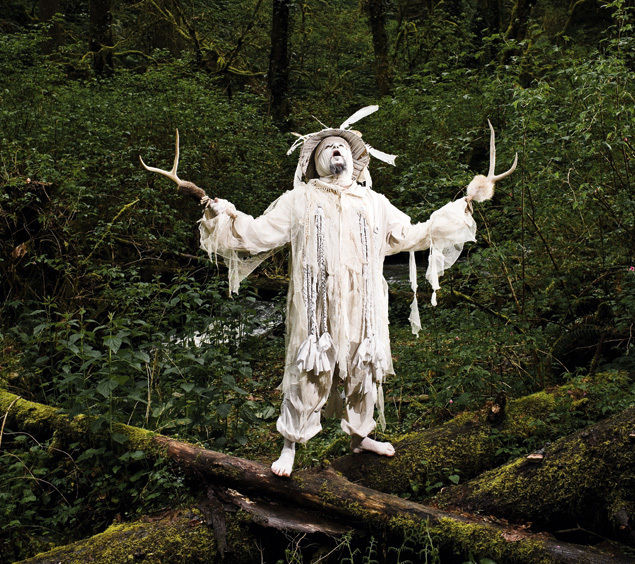The Mystic

Image: Daniel Root
SOME NIGHTS, he hauls fares for Radio Cab; on others, he performs as the genre-defying artist Soriah, one of the best Tuvan throat singers on the planet. Here, the master overtone vocalist talks about spiritualism, his journey to worldwide acclaim, and singing with frogs.
I WAS MEDITATING ON LIFE AND DEATH in River View Cemetery on my birthday in 1999. I’d been doing music my whole life, playing guitars and drums, but after this meditation I had a realization that I needed to express this voice I had. I was hanging around a group of people who were into off-the-wall ethnic sounds. They turned me on to this group, Huun Huur Tu. They played a show at the Aladdin and I snuck a tape recorder in. I took the tape home and studied it. After a few painful attempts I could maintain what’s called kargyraa, the low, guttural sound of throat singing. Shortly after, I started performing as Soriah.
I DID A CONCERT IN A SWAMP at Reed College once. I was knee-deep in mud and had this amp playing recordings of frogs. The frogs in the swamp started singing too, and it was this total immersion into nature. What I try to do is show people that magic exists all around us.
WHEN I’M SINGING I feel a very calming buzz, but there’s a real spark of vitality. It’s like electricity, like you’re merging in with other frequencies. It’s my way of expressing appreciation back to my world. Tuvans roll their eyes when Westerners go overboard about the spiritual connotations. They’re like, ‘This is how we live.’ Their world, their cosmology, isn’t separated like ours from spirituality. There’s no here and there.
IN 2007, I WENT TO TUVA for the first time for a throat-singing camp. Throat singing is a way of painting a picture of one’s environment. With different types of throat singing—or khoomei, that’s the actual name—you can trace a line on the horizon with the overtones. If you’re on a vast grassy steppe, they express it. There’s another technique derived from a stream. To the Tuvan’s mind, the stream taught him its ?own language.
I DECIDED TO ENTER the International Khoomei Symposium in 2008 as a way to test myself. (See video at right) I was absolutely terrified. The piece I worked on, I didn’t think I’d had enough time to work with the masters on it to give me proper instruction. The night before, I practiced in front of some people and totally bombed. So I was very nervous.
GETTING THROUGH THE WORDS [spoken in Tuvan] is a very intense part of the performance. You can’t have an accent. In a way, that counts as much as the singing, and once I got through that, the nervousness left me. I ended up winning third place overall. No foreigner in history has ever placed that high. Even after it happened, I had no idea. It was all in this different language. I didn’t know I was accepting the award. I was just standing there smiling.
ON MY LATEST SORIAH ALBUM, I’m singing in Aztec and the ideas have a lot to do with Aztec cosmology. Funny enough, some of the mouth shapes and tongue placement are similar to those used in my singing. Maybe it’s a happy coincidence. Maybe it could be whittled down to a scientific explanation. But it’s a helpful reminder to keep an eye out for other things: the unseen aspects of this life.




